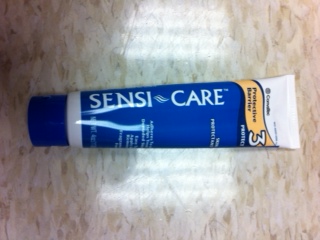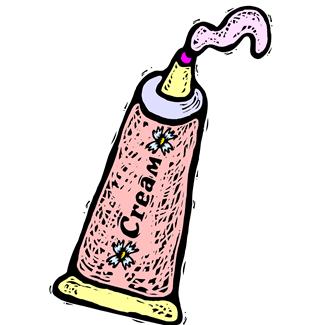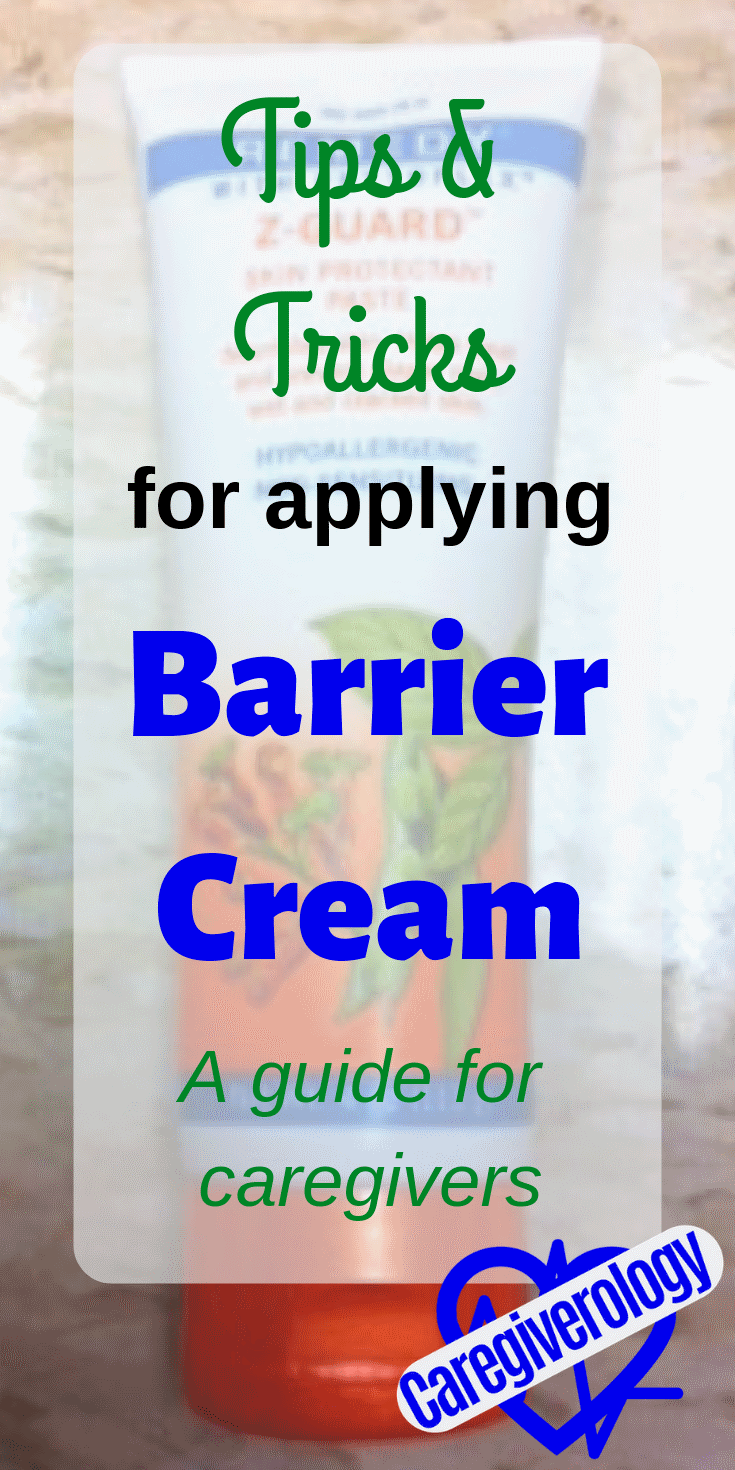Applying Barrier Cream - Caregiver Guide
Barrier cream, or skin protectant, is a cream used to help prevent and treat bed sores and rashes for patients who are incontinent or on bedrest. It is usually applied on the sacral area but can be applied anywhere where there is pressure and moisture such as the heels and elbows. There are many different kinds of these creams. Some rub on thick while others come on and off very smoothly.
How Much? It's Messy Remove Other Tips
How Much?
 Barrier cream tube
Barrier cream tubeHow much is enough? I personally used to cake it on thickly for most patients. I used to say that you don't have to put it on so thick that you can't see the skin underneath, but it's better for them to have too much rather than not enough. However, a Hospice Director corrected me on this matter. She states as follows:
"It is best to apply a thin layer to the skin, gently rubbing it in. If the cream or ointment is applied thickly, it will, indeed, rub off on the diaper, rendering the diaper useless because urine cannot get through the thick cream/ointment." Click here for the full post.
Taking all of this into consideration, just keep in mind that some of it may still rub off onto their adult diaper or incontinence pad. I used to cover more area than what some may consider necessary as well. Bed sores and especially rashes usually spread very quickly, so why not cover the surrounding area so you know they are completely protected?

It's Messy!
Make sure you have an extra pair of medical gloves in your pocket when you are putting on barrier cream because it gets everywhere. As soon as you put it on, don't fasten the brief or put the covers over the patient. Change your gloves first. Another trick is to put on a double layer of gloves. That way you can just take the second layer off and leave the first.
If you try to fasten a brief with barrier cream on your gloves, it will not stick. The cream somehow removes or covers up the adhesive. I have seen this happen time and time again.
When Should it be Removed/Reapplied?
Some creams are easy to remove while others seem to be impossible to get off. It is important that the same application of cream doesn't stay on for too long. Doing so can cause additional issues and can end up doing more harm than good.
When should it be removed and reapplied with a fresh coat? I'd say when it looks completely dry and hardened if not before. The best way to remove it would be with wipes or a warm washcloth while giving perineal care. Just be very gentle, you don't want to make the bed sore or rash even worse.
Other Tips
If you have the thick kind of cream, it may be hard to spread. A trick I use every now and then is to have the tube of cream soak in hot water for a few minutes. This also loosens it up so it's easier to squeeze out of the tubing, and believe me, it can be difficult.
If you are changing out an incontinence pad and an adult diaper at the same time, make sure you put the brief over the patient's bottom before you roll them to the other side otherwise all the barrier cream will stick to the rolled up pad. Believe me, I've made this mistake a few times.
Some wipes also come with barrier cream mixed in them. The kind I am familiar with are the Shield barrier cream cloths by Sage. They may be a little more expensive than regular wipes but not only are they extra thick and durable, they also help protect the skin while cleaning stool or urine off of their bottom.
Although barrier cream isn't necessary in every situation, it's definitely worth using in some especially if the patient is on bedrest. It can never make matters worse so it's always a good idea to have a tube or two lying around just in case. You never know when you might need it.
List of Caregiver Supplies and Equipment
From Applying Barrier Cream - Caregiver Guide to Home
Recent Articles
-
Common Truck Crash Injuries and Legal Remedies - Caregiverology
Jul 19, 25 10:49 AM
Known for its sun-drenched beaches, vibrant arts scene, and bustling maritime industry, Fort Lauderdale is a city that sees heavy traffic both on its roads and at its busy port. Unfortunately, with th… -
Why Expert Legal Help Matters After Serious Injury - Caregiverology
Jul 19, 25 10:35 AM
In Houston, over 67,600 car crashes occurred in 2023, resulting in 290 fatalities and 1,612 serious injuries. That’s roughly 185 accidents every day. -
How Life Care Planners Support Injury Recovery - Caregiverology
Jul 19, 25 10:18 AM
In Los Angeles, life care planners play a vital role in supporting injury recovery, especially for individuals facing catastrophic injuries such as traumatic brain injuries or spinal cord damage.





New! Comments
Have something to say about what you just read? Leave a comment in the box below.